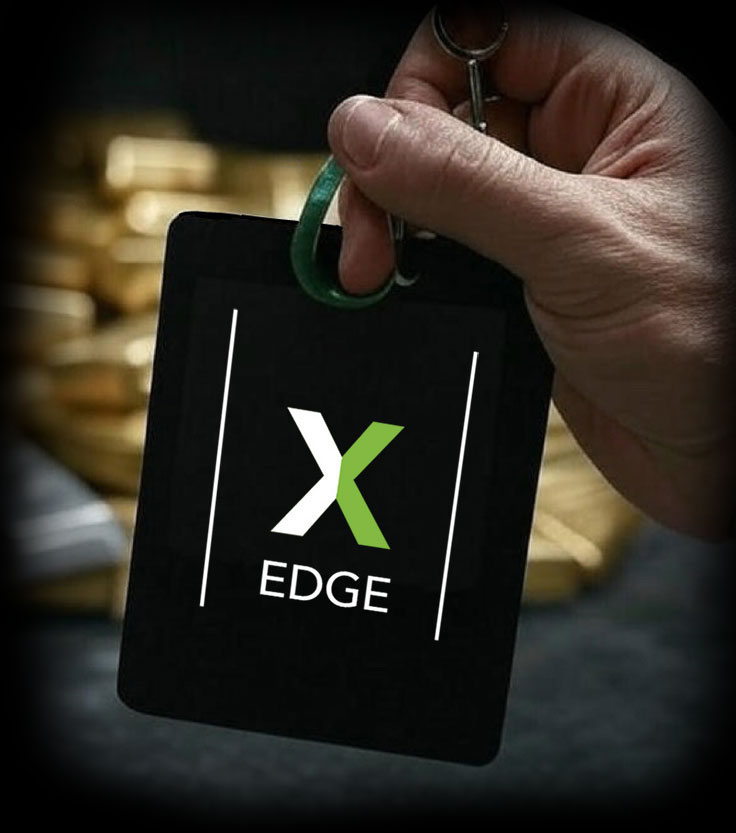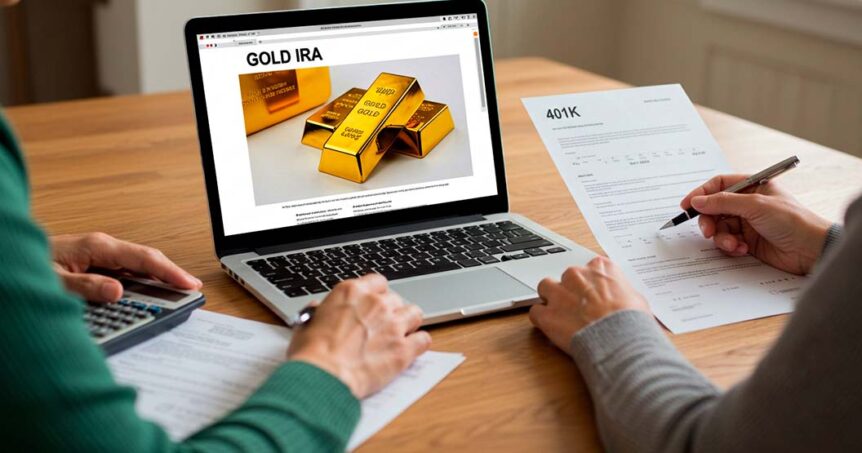Both Gold IRAs and 401(k)s are effective tools for building retirement savings, but they cater to different investment strategies. A Gold IRA focuses on tangible assets like gold and silver, offering protection against inflation and market volatility. In contrast, a 401(k) emphasizes traditional investments like stocks and bonds, with the added benefit of employer contributions. Choosing the right option depends on your financial goals and risk tolerance.
| Key Takeaways |
|---|
| A Gold IRA offers inflation protection and portfolio diversification through tangible assets like gold and silver coins, while a 401(k) builds savings via traditional investments like stocks and mutual funds. |
| Gold IRAs, managed by a Gold IRA custodian, provide tax advantages and secure storage for precious metals, making them ideal for long-term investors. |
| Employer contributions and tax-deferred growth make a 401(k) an effective way to grow retirement savings while benefiting from higher annual contribution limits. |
| Including precious metals in a Gold IRA safeguards your retirement portfolio against inflation and market volatility, enhancing financial security. |
| OWNx simplifies gold investments with options like fractional ownership, and Gold IRAs, making gold more accessible without the challenges of physical storage. |
| Combining a Gold IRA and a 401(k) can balance stability and growth, offering a well-rounded retirement strategy tailored to your financial goals. |
Gold IRA Overview
A Gold IRA is a self-directed retirement account designed for investments in physical precious metals such as gold, silver, platinum, and palladium. These assets must meet IRS purity standards and are securely stored in approved depositories. Gold IRAs provide unique benefits like:
- Diversification: Balances portfolio risk by adding tangible assets.
- Inflation Protection: Gold historically maintains value during economic uncertainty.
- Tax Advantages: Contributions can be tax-deductible (Traditional IRA), and earnings grow tax-deferred or tax-free (Roth IRA).
To manage a Gold IRA, investors work with an IRS-approved custodian responsible for account administration and asset storage. This option suits those seeking long-term stability and control over their retirement investments.
Learn more about the OWNx Precious Metals IRA
401(k) Overview
A 401(k) is an employer-sponsored retirement savings plan that allows employees to contribute a portion of their salary to grow tax-deferred. Key features include:
- Employer Contributions: Many employers offer matching programs, boosting savings.
- Diverse Investments: Funds are typically allocated to mutual funds, stocks, and bonds.
- Higher Contribution Limits: Annual limits are significantly higher than those for IRAs.
The convenience of automatic payroll deductions and the potential for employer matching make 401(k)s an excellent option for consistent and long-term savings. However, investment options are typically limited to those pre-selected by the plan administrator.
Key Differences: Gold IRA vs. 401(k)
While both options help secure your financial future, their approaches differ:
| Feature | Gold IRA | 401(k) |
| Asset Focus | Physical precious metals like gold and silver offer stability and value retention. | Traditional investments like stocks and bonds, subject to market volatility. |
| Control | Self-directed with full control over investment choices, giving you greater autonomy. | Managed by employers or plan administrators. |
| Tax Benefits | Offers tax-deferred or tax-free growth, potentially preserving more wealth over time. | Tax-deferred growth; Roth 401(k) option allows tax-free withdrawals but depends on employer plans. |
| Contribution Limits | Annual contribution limits are lower but often sufficient for diversification into gold. | Higher limits but primarily geared toward traditional, market-dependent assets. |
| Liquidity | Designed for long-term wealth protection; less liquid but aligns with strategic planning. | Easier access to funds, but penalties and taxes often apply for early withdrawals. |
Key Benefits of a Gold IRA
- Portfolio Diversification: Tangible assets, like gold, offer unique stability and reduce reliance on volatile markets.
- Inflation Hedge: Gold preserves purchasing power, especially during times of economic uncertainty.
- Tax Perks: Contributions may be tax-deductible, with tax-advantaged growth enhancing long-term wealth.
- Long-Term Stability: Gold has historically retained or increased its value, providing enduring financial security.
Advantages of a 401(k)
- Employer Matching: Boosts savings through additional contributions, though availability varies by employer.
- Convenience: Automatic payroll deductions simplify the savings process.
- Tax Benefits: Options to reduce taxable income now or opt for tax-free withdrawals with a Roth 401(k).
- Higher Contribution Limits: Allows greater annual contributions but is often tied to traditional, market-dependent assets.
Why Choose Gold Investments for Retirement?
The fact that gold’s value often remains stable or increases during times of economic uncertainty makes it an effective asset for mitigating risks in retirement portfolios. It also serves as a hedge against inflation, preserving the value of savings over time.
Advantages of Gold in Retirement Savings:
- Stability During Market Volatility: Gold typically retains its value when traditional investments decline, offering security during economic downturns.
- Inflation Protection: As the cost of goods rises, gold often appreciates, maintaining the purchasing power of savings.
- Physical Asset: Unlike paper investments, gold is a tangible resource that can be securely stored and does not rely on financial institutions.
Other precious metals like silver, platinum, and palladium can also be included in Gold IRAs, further enhancing diversification. These metals provide additional options for investors looking to spread their risk across a broader range of assets.

Start buying precious metals at cost.
Steps to Rollover a 401(k) into a Gold IRA
Transferring funds from a 401(k) to a Gold IRA is a process that allows diversification without incurring tax penalties. Following the proper steps ensures compliance with IRS regulations.
How to Complete a Gold IRA Rollover:
- Select a Custodian: Choose an IRS-approved custodian to manage the Gold IRA and oversee the account compliance.
- Open a Self-Directed IRA: This type of account is necessary for investing in physical precious metals.
- Transfer Funds: Work with the 401(k) provider and the new custodian to transfer funds directly into the Gold IRA to avoid taxes or penalties.
- Purchase Precious Metals: Use the transferred funds to buy approved gold or other metals, which will be securely stored in an IRS-approved facility.
For those concerned about the costs associated with purchasing physical gold, fractional ownership provides an alternative. This option allows investors to acquire portions of larger assets, reducing upfront expenses and making gold more accessible.
Key Differences in Liquidity, Control, and Costs
Gold IRAs and 401(k)s serve distinct purposes. Understanding the differences in liquidity, control, and costs can help investors make an informed decision based on their financial goals.
Liquidity
Traditional Gold IRAs involve tangible assets like gold, which require working with a custodian for transactions. While this process takes time, it aligns with the long-term focus of Gold IRAs, making them ideal for wealth preservation rather than emergency access. The OWNx Precious Metal IRA is different in that it allows you to easily invest fractionally in physical gold. In other words, you buy small portions of large bars and your allocation can be bought and sold within your IRA. This works more like a a 401(k) with typically quicker access to funds.
Control
A Gold IRA allows full self-direction, enabling investors to choose specific precious metals for their portfolio. This flexibility empowers custom investment strategies but also requires active involvement to meet IRS compliance rules. In comparison, 401(k)s are managed by employers or plan administrators, offering convenience but limiting choices to a predefined selection of mutual funds and stocks.
Costs
Gold IRAs involve storage fees, custodial fees, and insurance costs for safeguarding physical assets. These costs are offset by gold’s potential for value appreciation over time. 401(k)s typically feature lower fees, including fund management and administrative costs, but these savings often come at the expense of limited asset diversity. Careful evaluation of fees and their long-term impact is essential when comparing the two options.
Who Should Consider a Gold IRA?
A Gold IRA appeals to specific investors who prioritize diversification, inflation protection, and control over their retirement savings.
Profile of an Ideal Gold IRA Investor
Gold IRAs are particularly suitable for individuals who:
- Seek to protect against inflation: Gold has historically retained its value during times of rising costs, preserving purchasing power.
- Want diversification: Including precious metals in a portfolio reduces dependence on the stock market and balances overall risk.
- Value tangible assets: Gold’s physical nature provides a sense of security and permanence that paper assets lack.
Investors with a long-term outlook or a strong preference for stability often gravitate toward Gold IRAs. These accounts also attract those who wish to shield their savings from market volatility and economic instability.
When a 401(k) Might Be the Better Option
A 401(k) may be a better fit for individuals seeking simplicity, employer contributions, and high liquidity. It’s ideal for those who:
- Benefit from employer matching programs, which can significantly boost savings.
- Prioritize ease of use, as contributions are automated and investments are pre-selected.
- Need more immediate access to funds for emergencies or planned expenses.
For many, combining a Gold IRA with a 401(k) creates a well-rounded approach to retirement planning, leveraging the strengths of both.
Common Concerns About Gold IRAs
Some potential investors hesitate to open a Gold IRA due to concerns about practicality and drawbacks. Addressing these questions can clarify whether this option aligns with their financial goals.
Storage and Security
Physical gold must be stored in an IRS-approved depository. While this ensures safety, it adds costs that investors must factor into their plans. These include fees for storage and insurance. Fractional ownership offers a way to avoid direct storage responsibilities, as investors buy shares of gold rather than full physical pieces. This makes gold more accessible without requiring individual storage arrangements.
Market Volatility
Gold prices can fluctuate in the short term, but the asset is recognized as a stable store of value over the long term. During economic downturns, gold often outperforms traditional investments, serving as a hedge against losses in stocks or bonds.
Liquidity
Unlike a 401(k), which offers easier access to funds, Gold IRAs require working with a custodian to sell assets. While this process takes more time, it’s less of an issue for long-term investors who plan withdrawals strategically.
By understanding these considerations, investors can decide whether the advantages of a Gold IRA outweigh the potential limitations.
Combining Gold IRAs and 401(k)s
Using both a Gold IRA and a 401(k) can provide a balanced approach to retirement savings. Each offers unique benefits that complement the other, resulting in a diversified portfolio.
Diversification Matters
A 401(k) primarily focuses on paper assets like mutual funds and stocks. These provide growth potential but are vulnerable to market fluctuations. A Gold IRA introduces physical assets that are less correlated with traditional investments. This reduces the overall risk in a retirement portfolio and adds a layer of stability.
How to Balance Both
- Allocate a portion of retirement savings to a Gold IRA for long-term protection against inflation and economic instability.
- Keep the rest in a 401(k) to benefit from employer contributions and the liquidity of traditional investments.
- Adjust the ratio over time based on financial goals and market conditions.
Combining these two options ensures that retirement savings are both protected and positioned for growth.

Start buying precious metals at cost.
Conclusion
Gold IRAs and 401(k)s are both valuable options for retirement planning, each catering to distinct financial goals. A Gold IRA offers diversification, protection against inflation, and the enduring value of tangible assets. While it involves higher costs and less liquidity, it is well-suited for long-term investors seeking stability and wealth preservation. The OWNx Precious Metals IRA helps overcome any liquidity issues that could typically be experienced, by allowing fractional ownership in gold, silver, and platinum.
A 401(k) provides ease of use, liquidity, and the potential for amplified savings through employer contributions. With higher contribution limits and automated payroll deductions, it is an excellent choice for individuals focused on growing their retirement funds through traditional investments. However, its reliance on market-dependent assets introduces a level of volatility that may not align with all investors’ risk tolerance.
The availability of fractional ownership has made gold more accessible, allowing investors to include it in their portfolios without the complexities of full ownership. This innovation broadens access to gold investments, making them practical and cost-effective for a wider range of investors.
By understanding the unique benefits of both Gold IRAs and 401(k)s, individuals can design a retirement strategy that meets their specific needs. Leveraging the strengths of each option can provide a diversified and secure foundation for achieving long-term financial goals.
FAQs
A Gold IRA allows you to invest in tangible assets like gold coins and other precious metals, while a 401(k) focuses on traditional investments like stocks and mutual funds, often with employer contributions.
Yes, in addition to gold coins, a Gold IRA can include other precious metals like silver, platinum, and palladium, provided they meet IRS purity standards.
A Roth IRA offers tax-free withdrawals in retirement, which can be a significant benefit if you expect your tax rate to be higher in the future, while a traditional Gold IRA provides tax-deferred growth.
Gold coins like the American Gold Eagle are popular for their liquidity and recognizability, while gold bars may offer a more cost-effective option for large investments in precious metals.
Yes, you can roll over a 401(k) into either a Roth IRA or a Gold IRA, depending on your retirement goals and tax preferences, ensuring compliance with IRS rollover rules
